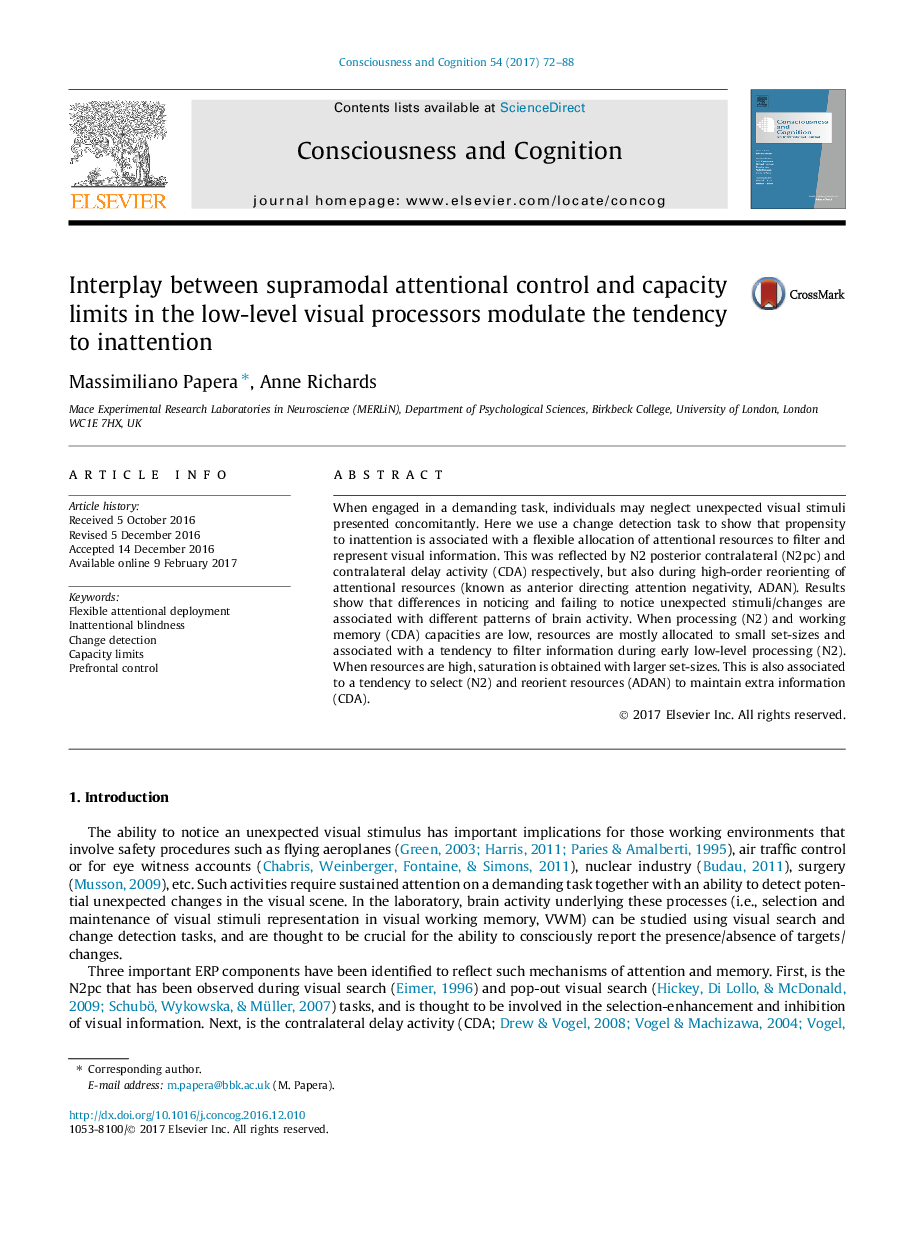| Article ID | Journal | Published Year | Pages | File Type |
|---|---|---|---|---|
| 5041724 | Consciousness and Cognition | 2017 | 17 Pages |
•Capacity limits can prevent visual stimuli from gaining access to awareness.•A change detection task was used to estimate processing and memory capacity.•Results show that resources are allocated flexibly depending on capacity limits.•Larger capacity limits allow allocation of resources to unexpected stimuli.•Smaller capacity limits drive a tendency to filter/not-attend information.
When engaged in a demanding task, individuals may neglect unexpected visual stimuli presented concomitantly. Here we use a change detection task to show that propensity to inattention is associated with a flexible allocation of attentional resources to filter and represent visual information. This was reflected by N2 posterior contralateral (N2pc) and contralateral delay activity (CDA) respectively, but also during high-order reorienting of attentional resources (known as anterior directing attention negativity, ADAN). Results show that differences in noticing and failing to notice unexpected stimuli/changes are associated with different patterns of brain activity. When processing (N2) and working memory (CDA) capacities are low, resources are mostly allocated to small set-sizes and associated with a tendency to filter information during early low-level processing (N2). When resources are high, saturation is obtained with larger set-sizes. This is also associated to a tendency to select (N2) and reorient resources (ADAN) to maintain extra information (CDA).
